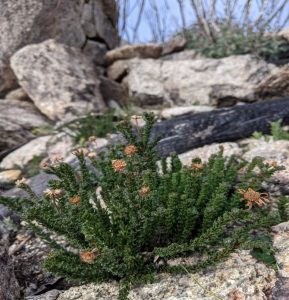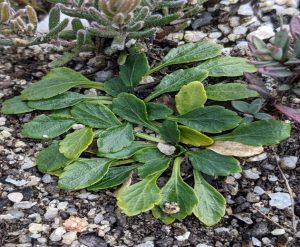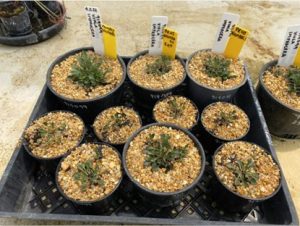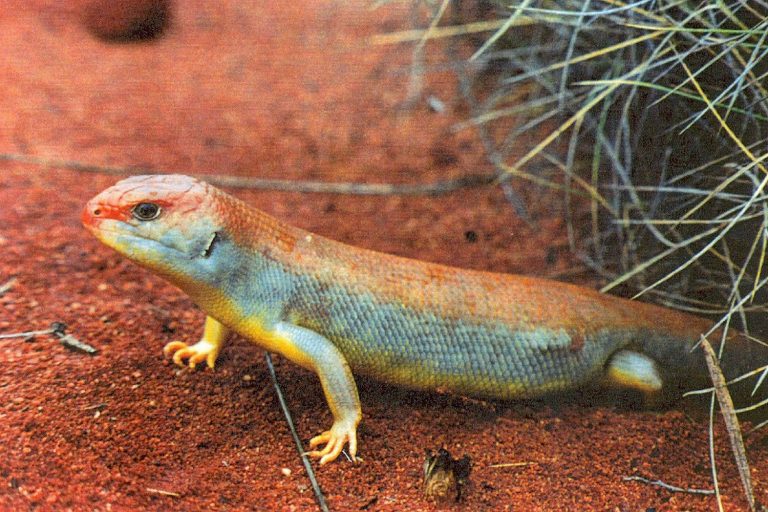New Beginnings for sub-alpine flora species in Namadgi National Park
The 2020 bushfires devasted many native plant species in Namadgi National Park, and other sub-alpine parks, many of which are endemic to this region. But we can start this year with some good news – there’s a comeback underway.
In 2021, a Conservation Research team from the ACT Government’s Environment, Planning and Sustainable Development Directorate, undertook preliminary surveys of high-country locations where small populations of the Namadgi Tea-Tree (Leptospermum namadgiense), Daisy Bush (Olearia rhizomatica) and Dwarf Violet (Viola improcera) were recorded prior to the 2020 bushfires.

There was good news for the Daisy Bush with a number of sub-populations re-located.
Then more reasons for celebration as a previously unrecorded population of the Dwarf Violet was located at Big Creamy Flats!
Samples were lodged with the Australian National Herbarium and plant material has been collected by the field staff from the Australian National Botanic Gardens (ANBG) and successfully potted up in the ANBG nursery. Hopefully, some of these specimens will flower in Spring/Summer.
The Survive and Thrive project team are working to secure seed and plant collections of the Dwarf Violet and 11 other threatened plant species in Namadgi and Kosciuszko as insurance against their extinction.


Despite the restriction imposed by the pandemic and an extremely wet spring, the intrepid field staff from the ANBG, with support from ACT and NSW field ecologists, have finally been able to get into the high country to locate and take cuttings from the Namadgi Tea-Tree and the Shiny Phebalium (Leionema lamprohyllum subsp. Obovatum). These cuttings have been potted up and staff in the ANBG nursery are keeping a close eye on these precious specimens to determine the right conditions for the plants to thrive. Field trips continue as the team seeks to locate plant material for all 12 species of concern.
We are asking citizen scientists, who love our high-country flora, to lend a hand with the conservation of these threatened species by assisting with locating remaining populations. By taking photographs and capturing GPS coordinates, citizen scientists out bushwalking can help researchers assess the extent, distribution and survival of these special species. Sightings can be loaded to the Canberra Nature Map (CNM). The list of target species is available on CNM via NatureMapr smartphone app.
We are looking forward to undertaking more field surveys and collections over the coming months and bringing you further updates on progress to support threatened species in Namadgi and Kosciuszko.
Ultimately the mission is to collect seeds to bank, as an insurance against extinction, and to uncover the germination cues on how to grow these species to ensure populations can be restored should they fail to recover naturally.
Thanks to our valued partners for supporting this project:



